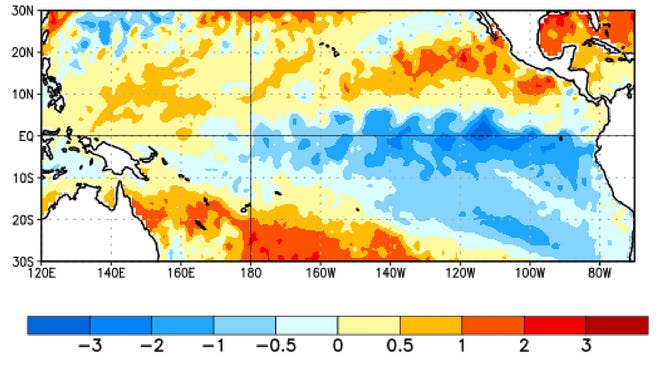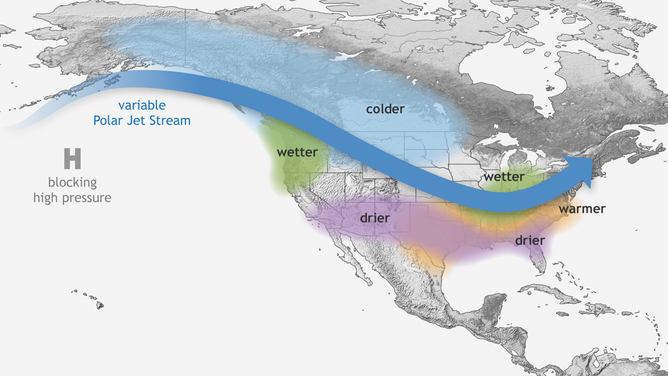La Niña will likely continue through spring
Transition to a neutral pattern is expected by summer, forecasters say.

Average sea surface temperature (SST) anomalies (°C) for the week centered on 5Jan. 5, 2022. Anomalies are computed with respect to the 1991-2020 base period weekly means.
(NOAA/CPC)
La Niña is expected to continue through the early part of the year before switching to a neutral pattern by the summer.
A new outlook issued Thursday by the Climate Prediction Center said that the abnormal cooling of waters in the Pacific Ocean will continue through at least March and possibly until May. A transition to a neutral pattern is expected between April and June.
La Niña is part of a 5- to 7-year cycle known as the El Niño Southern Oscillation, or ENSO, generated from a change in water temperatures in the central and eastern equatorial Pacific Ocean.
When sea-surface temperatures drop to 0.9 degrees Fahrenheit (0.5 degrees Celsius) below average or lower, it's considered La Niña. When water temperatures rise to 0.9 degrees Fahrenheit above average or higher, it is known as El Niño. When waters are between 0.9 degrees Fahrenheit above and below average, neither El Niño nor La Niña is in place, so it's considered "neutral" conditions.
Researchers have found these changes in ocean temperatures have a cascading effect on weather conditions across the tropics in the Pacific Ocean, which, in turn, has a profound effect on global weather patterns by altering the positions of jet streams.
What does it mean for the weather?
In the United States, La Niña winters generally bring cooler, wetter conditions to the North and milder, drier conditions to the South. It can keep a drought going in the Southwest, while the Pacific Northwest basks in an above-average mountain snowpack.
The Northern Plains are usually in for a colder-than-average winter, while the Great Lakes region tends to lean on the wetter side. The Southeast and Deep South westward into Texas usually end up with a mild and dry winter.

Typical wintertime impacts of La Niña across the United States.
(NOAA)
As you might surmise, the opposite part of the cycle, the warm-phase El Niño, tends to bring the reverse patterns.
El Niño winters are usually warm and mild across the northern U.S. and very wet across the South.
Globally, La Niña winters can cause drought in South America, affect the monsoon season in the Indian Ocean and supercharge the Atlantic hurricane season. The record-shattering hurricane season of 2020 coincided with La Niña conditions during the winter of 2020-21.